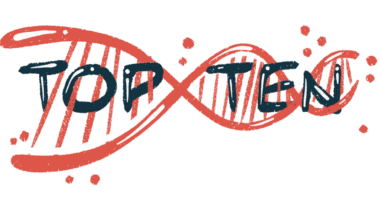$700,000 MDA Grant to Help Establish LGMD Clinical Research Network

Nicholas Johnson, vice chair of research and associate professor of neurology at Virginia Commonwealth University in Richmond, was awarded a $700,000 grant from the Muscular Dystrophy Association (MDA) to establish the Limb-Girdle Muscular Dystrophy (LGMD) Clinical Research Network (CRN).
“MDA is pleased to support the development and work of the LGMD Clinical Research Network, which will put in place critical infrastructure for limb-girdle muscular dystrophy research and therapy development,” Lianna Orlando, PhD, MDA scientific program officer, said in a press release.
The two-year grant will /support seven LGMD-focused centers and their site or principal investigators:
- University of California, Irvine — Tasheen Mozzaffar, MD;
- University of Colorado — Matt Wicklund, MD;
- University of Iowa — Kathy Mathews, MD;
- Brigham and Women’s Hospital in Boston — Anthony Amato, MD;
- University of Kansas Medical Center — Jeff Statland, MD;
- Washington University in St. Louis — Conrad Weihl, MD, PhD;
- Virginia Commonwealth University in Richmond — Nicholas Johnson, MD.
The MDA has 10 active LGMD fellowships (a financial commitment of more than $2.8 million), investing more than $59 million in LGMD grant research in the past 68 years.
The MDA is now sponsoring 177 international research projects, with another 28 pending.
LGMD describes childhood- or adult-onset muscular dystrophies that are distinct from the more common types, such as Duchenne and Becker. There is no cure or disease-modifying treatment for any of the LGMD subtypes, so new approaches and research are needed.
The new research network aims to standardize approaches and develop clinical outcome assessment tools to be used in trials.
“We believe that the absence of tools to measure disease progression is a major barrier to conducting drug trials in this underserved population,” Johnson said.
“We are focused on developing these tools, with a particular focus on those assessments that may be used across different LGMD types, and which assessments are unique to specific subtypes,” he added.
“Progress in these areas is best suited for a research network that is geographically distributed and includes investigators with varied expertise in clinical and laboratory methods.”
Johnson and his colleagues will use the grant money to first work on four distinct LGMD subtypes. They plan to collect DNA samples and genetic and clinical information to help them describe disease progression. They will also run a study of candidate clinical outcome assessments and create disease-specific patient-reported outcomes.
“The network is well-suited to address current challenges facing LGMD researchers and clinicians, and its work will improve clinical trial readiness in this group of diseases,” Orlando said.






